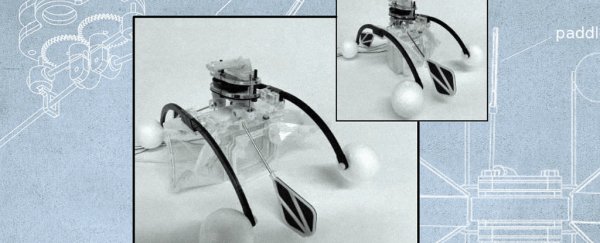The latest novel and potentially revolutionary use of robotic technology comes from Bristol University in the UK, where academics have developed the Row-Bot: place it in water and the little machine can clean up pollution and generate electricity from it at the same time. As Fast Company reports, Row-Bot floats on the surface of the water and is powered by a small artificial stomach that runs on bacteria.
Because Row-Bot produces power from dirty water, it can go on moving and swimming for as long as there's cleaning to do, and it could one day be a hugely useful tool in the fight to limit our impact on the environment around us.
"The work shows a crucial step in the development of autonomous robots capable of long-term self-power," write the report's authors, who also say the water boatman beetle was an inspiration for their design.
Key to the robot's operation is the Microbial Fuel Cell (MFC) that acts as its digestive system: microbes digest the bacteria in the water and produce electrons as a result, electrons that can be harvested to give the 'oars' of the bot another push. In this way the Row-Bot can happily paddle around foraging for its own food and without having to rely on an external energy source or a refuelling stop.
While this is only a proof-of-concept at this stage, the researchers are hoping their design can be developed and adapted for widespread use.
"The energy generated has been shown to exceed the energy required to refuel," explains the report. "It is the first practical robotic application to use a single MFC and as such demonstrates the potential of the technology as an energy supply… This work demonstrates a suitable system for robots operating autonomously for extended periods in the environment and presents many avenues for development."
As Fast Company reports, one of the key innovations in the design of the Row-Bot is the way the electrons are sent directly to the battery rather than requiring another chemical reaction first – this improves the efficiency of the robot's internal systems enough for it to be able to propel itself across the water unaided. There's actually some energy left over which could be used elsewhere.
It's going to be a while before the Row-Bot is deployed to clean up sewage pollution but it's a promising development in autonomous robotics that can refuel themselves rather than having us do it for them. The same concept could eventually be used for robots moving on land and through the air too.
